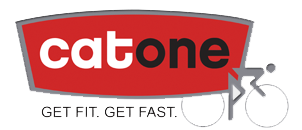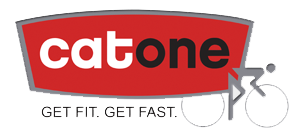
Group Rides with a Purpose
Group Rides with a Purpose
I’m sure we know plenty of riders that base their entire training schedule around group rides. They do the Tuesday night ride, Wednesday night worlds, the Thursday ride, the Saturday AM ride, the Sunday AM ride, etc., week in and week out. That’s what all the fast guys do, isn’t it? Is there some logic to this approach? Too many riders get caught up in this cycle of excessive intensity and insufficient recovery time between intense workouts, never allowing for rebuilding and adaptation. These riders subsequently ride at the same level all year, never experiencing the peaks associated with a sound, periodized program. While all group rides are not total hammer sessions, most of the time “1 rider is training, 2 riders is a race.” The greater the number of riders that show up for a ride, the less control you’ll have over the volume, intensity, and ride dynamics. Group rides aren’t all bad. Cycling and triathlon are very social sports, and for many athletes, that’s the main reason they get off the couch and onto a saddle. What is competition without someone else to beat, drop, or at least compare oneself against? Training in groups can make time go by faster on long base miles rides, or provide a necessary push to get one out of their comfort zone. Late in the season, when structured workouts may seem less appealing, group rides can be a refreshing way to maintain or fine tune fitness.
When selecting a group ride, make sure the intensity of the ride will allow you to stress the energy system that you are focusing on. For example, if you are looking to develop your lactate energy system, seek out a ride with a continuous rotating paceline or steady climbs, as opposed to one with undulating terrain or numerous attacks. Continuous pace-lining is similar to “over-under” efforts, where you alternate VO2 or anaerobic capacity type efforts(above race pace) with steady state intensity(race pace), forcing you to recover and settle back into a sustainable workload. If the rotation is not hard or fast enough for you perform this kind of training, you can achieve the same goal throwing in some hard attacks and then attempting to hang onto the group when you get caught, repeating when sufficiently recovered. When trying to attempting to train at endurance or recovery pace, simply use your best judgement. If the pace goes up and you find yourself pushing the limits of your workout parameters, there is no shame in backing off and doing your own thing. There may be some riders who will snicker about you sticking to your program or “getting dropped,” but you’ll have the last laugh when you’re smoking them at your priority event. Recovery rides are almost always best performed by yourself, or with a non-racer friend or spouse(sometimes necessary for hall pass time).
When used in moderation and with a purpose, group rides can be a fun and effective way to help achieve your fitness goals. Use your best judgment, be safe, and remember that there isn’t a million dollar prize waiting for you at the end of Wednesday night Worlds.


